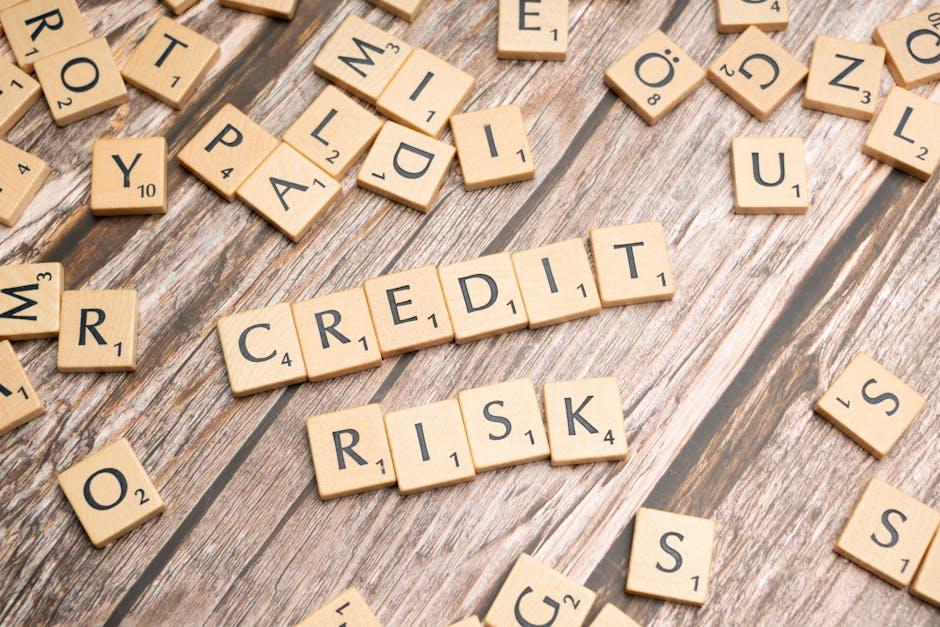In the intricate tapestry of modern finance, where algorithms and analytics reign supreme, the whispers of history often hold the most profound insights. As we navigate the labyrinthine corridors of credit risk assessment, it becomes increasingly evident that the past is not merely a backdrop but a vital guide. Financial history, with its tales of booms and busts, resilience and ruin, offers a treasure trove of lessons that can illuminate the path forward. In this exploration, we delve into the pivotal role that historical financial events play in shaping our understanding of credit risk, revealing how the echoes of yesteryears can forecast the uncertainties of tomorrow. As we unravel this narrative, we aim to empower financial professionals with a deeper comprehension of how the past informs the present, ensuring that the lessons learned are not only remembered but also applied with precision and foresight.
Understanding the Historical Context of Credit Risk Analysis
To truly grasp the intricacies of credit risk analysis, one must delve into the annals of financial history. The evolution of credit risk is not merely a modern-day phenomenon but a tapestry woven with threads from various economic epochs. Historical events such as the Great Depression, the 2008 financial crisis, and numerous banking collapses have all contributed to shaping the methodologies used today. These events underscore the importance of understanding the past to anticipate future financial uncertainties. By examining these historical precedents, financial analysts can identify patterns and signals that might otherwise go unnoticed.
- Economic Cycles: Understanding the cyclical nature of economies helps in predicting downturns and assessing the potential for default.
- Regulatory Changes: Shifts in financial regulations over time provide insights into how risk assessments have adapted to new legal landscapes.
- Technological Advancements: The integration of technology in financial systems has transformed credit risk analysis, making historical technological shifts a critical study area.
By leveraging these historical insights, financial institutions can develop more robust risk management strategies. They can anticipate potential pitfalls and craft policies that not only mitigate risk but also seize opportunities for growth in a complex and ever-evolving financial landscape.

Leveraging Past Financial Patterns for Predictive Accuracy
In the intricate world of credit risk assessment, the meticulous examination of historical financial data serves as a cornerstone for predictive accuracy. By delving into past financial patterns, lenders and financial analysts can unveil critical insights that shape the future of creditworthiness evaluation. This approach is not merely about numbers; it is about recognizing trends and anomalies that can signal potential risks or opportunities. Understanding how individuals and businesses have navigated economic fluctuations in the past provides a robust framework for anticipating future behaviors.
- Trend Analysis: Identifying consistent behaviors over time, such as payment punctuality or spending habits, can highlight reliability or potential risk factors.
- Anomaly Detection: Spotting irregularities in financial history, such as sudden spikes in credit utilization, can alert to possible financial distress.
- Comparative Insights: Evaluating financial patterns against industry benchmarks or peer groups can provide a broader context for risk assessment.
By leveraging these insights, financial institutions can enhance their predictive models, ensuring a more nuanced and precise approach to credit risk management. This not only aids in minimizing defaults but also empowers lenders to offer tailored financial solutions, fostering a more resilient financial ecosystem.

Integrating Financial History into Modern Credit Assessment Models
In the ever-evolving landscape of credit assessment, the inclusion of financial history plays a pivotal role in refining the accuracy of risk evaluations. Modern credit models are increasingly leveraging historical data to paint a more comprehensive picture of an individual’s financial behavior. This integration is not just about looking at past credit scores but delving into a rich tapestry of financial activities that offer deeper insights into a borrower’s reliability. Financial history encompasses a wide array of elements, including:
- Payment patterns: Consistency in meeting financial obligations.
- Debt management: Historical handling of credit limits and outstanding balances.
- Diverse credit mix: Experience with various types of credit, such as mortgages, credit cards, and personal loans.
- Economic resilience: Adaptability to economic downturns and recovery from financial setbacks.
By weaving these historical threads into the fabric of modern credit assessment models, lenders can make more informed decisions, ultimately leading to a more robust financial ecosystem. The nuanced understanding gained from this historical perspective allows for the anticipation of future financial behavior, thus enhancing the predictive power of credit risk models.

Strategic Recommendations for Enhanced Credit Risk Management
In today’s volatile financial landscape, leveraging financial history as a cornerstone for credit risk management is more crucial than ever. Financial institutions must adopt a multi-faceted approach to assess the historical data of potential borrowers. This includes analyzing past credit behavior, payment patterns, and the frequency of credit inquiries. By utilizing advanced data analytics and machine learning algorithms, organizations can uncover hidden patterns and predict future creditworthiness with greater accuracy.
- Data Integration: Combine traditional credit scores with alternative data sources such as utility payments and rental histories.
- Predictive Modeling: Implement machine learning models to identify potential risks before they materialize.
- Continuous Monitoring: Regularly update risk assessments to reflect changes in economic conditions and borrower behavior.
Moreover, a proactive stance on regulatory compliance ensures that institutions not only protect themselves from financial losses but also build trust with stakeholders. By fostering a culture of transparency and accountability, organizations can mitigate risks while enhancing their reputation in the marketplace.





